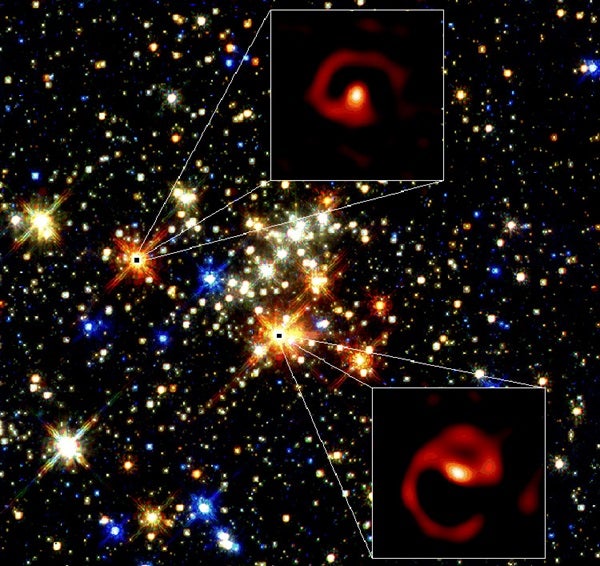The discovery of dusty pinwheels around two stars in the Milky Way’s Quintuplet cluster reveals each contains a pair of stars instead of just one. The finding puts to rest debate among astronomers over the nature of these dust-cocooned stars.
A team led by Peter Tuthill, an astrophysicist at Australia’s University of Sydney, investigated the cluster’s brightest stars using the giant telescope at Keck Observatory in Hawaii. Quintuplet, named for its five prominent red stars, is one of our galaxy’s most massive clusters. But its brightest stars have been hard to view in detail because they’re quite distant — about 26,000 light-years away — and each is wrapped in a light-reddening shroud of dust. Quintuplet holds many Wolf-Rayet stars — a type thought to be the immediate precursors of supernovae.
“Only a few pinwheels are known in the galaxy,” says team member Don Figer, an astronomer at the Rochester Institute of Technology in New York. “We’ve found five all next to each other in the same cluster.”
The astronomers obtained cluster images with the greatest resolution yet, but they were unable to penetrate completely the stars’ dusty shroud. Nevertheless, the new images allowed the team to see that the dust forms spirals. The geometry of the plume allows scientists to measure the properties of the binary stars, including orbital period and distance.
Tuthill and team member John Monnier of the University of Michigan at Ann Arbor had seen this before. In 1999, they identified dust pinwheels around two other Wolf-Rayet stars (WR 104 and WR 98a). The spiraling dust forms when a Wolf-Rayet star’s violent outflow, called a stellar wind, collides with a similar outflow from an orbiting companion star. The interacting winds create the spiraling dust stream.
Quintuplet’s stars show the same type of spiral, which tells researchers each is actually two or more stars and demonstrates that Quintuplet’s most massive members are smaller than previously thought. The findings will appear in Friday’s issue of the journal Science.










